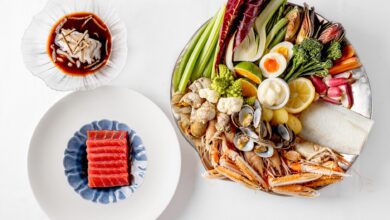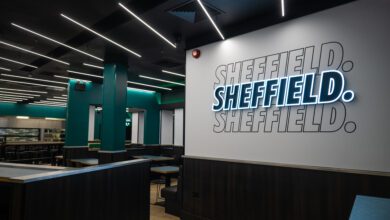Why do casual dining sites thrive in economic uncertainties?
As customers are increasingly tightening their purse strings against a difficult economic backdrop, casual dining businesses are currently coming out on the bright side, but why are they weathering the storm so well?

Register to get 1 free article
Reveal the article below by registering for our email newsletter.
Want unlimited access? View Plans
Already have an account? Sign in
“Quick service restaurant companies like us often do well during periods of recession and economic uncertainty,” says Richard Morris, chief executive officer of Tortilla, “as consumers tend to turn to good value-for-money products and brands that they can trust during such times.”
In fact, more people are purchasing takeaway or delivery orders today than they were before the recent increase in cost of living, according to new global research commissioned by Deliverect and conducted by Censuswide. Overall, some 57.34% of consumers are now purchasing up to three takeaways in a week, compared to 49% prior to the rise in inflation and cost of living crisis.
As customers are now putting more thought behind how they spend their money, people are more likely to cut back on other activities such as buying clothing (44%), going out for drinks and dinner (47%) and travelling (43%), compared to takeaway or delivery orders.
“Casual dining is an affordable luxury during a time of crisis, representing a glimmer of hope at this moment in time and making the week seem slightly more palatable,” says Joe Heather, general manager of UK&I at Deliverect.
Similarly, Glenn Edwards, managing director at LEON, adds: “During times of economic uncertainty, trends have told us that consumers choose those ‘affordable luxuries’. We’ve seen increased sales of seasonal and limited edition coffees which fit this trend for our guests.”
Casual dining vs. in-house dining
“Casual dining has been made affordable by the likes of the competition against each other, meaning the end consumer has been given an affordable luxury to be delivered at a relatively low cost,” Heather says.
As such, LEON is ensuring entry level and accessible price points despite challenging supply chain complexities and increasing costs, and according to Edwards, the group is consequently seeing “strong” weekday sales.
To keep up-to-date with customer needs, LEON runs a ‘Big Listen’ survey every year which writes to over 200,000 guests in its database. “We want to understand from our guests what their key needs are and how, if at all, their lifestyles have changed. This helps us ensure we are continuing to give an added value menu for our guests,” Edwards says.
He adds: “One of the changes for LEON has been the difference in mix. Previous powerhouse areas such as the City of London may have different ‘busy days’ than pre-pandemic sales due to new hybrid working styles across businesses, and previous more ‘weekend destination’ trading restaurants are seeing strong weekday sales.”
Looking ahead, LEON is continuing its growth plan which consists of further self-serve coffee kiosks, drive-thrus and traditional high street restaurants, and Tortilla has five further sites planned to open in H2 FY22, with its new store roll-out expected to increase to 12-15 per annum from FY23.
Overall, Tortilla’s revenues jumped 30% to £26.9m in the 26 weeks ended 3 July 2022 (H1), and its like-for-like sales grew 19%, which is 13 percentage points higher than the CGA industry Peach benchmark. Additionally, the group saw “excellent progress” in opening new sites, both organically and following its strategic acquisition of Chilango, and continuous sales growth across the estate.
“All our openings in the last two years have been profitable in the first month of trading,” Morris reveals. “We are taking advantage of the favourable property market as much as possible at this time, and it is clearer than ever that new store openings are met with a fantastic reaction from consumers.”
Tortilla continues to expand its site portfolio both in London (including through the Chilango acquisition) and beyond, with new openings set to take place in Coventry, Canterbury and Durham in coming months.
With casual dining showing no signs of slowing down, it begs the question of whether fine dining restaurants are taking a hit and whether customers are increasingly turning to takeaway and delivery services.
According to CGA’s Hospitality at Home Tracker, delivery sales at managed restaurant, pub and bar groups in August 2022 were 13% higher than in August 2021. Additionally, compared to pre-Covid levels in August 2019, delivery sales were 263% higher – more than five times the growth of 49% for takeaways.
All in all, deliveries accounted for nearly 15 pence in every pound spent with managed groups offering delivery in August 2022, and takeaways attracted only seven pence. Despite total at-home sales having fallen since Covid-19 restrictions ended, the tracker reveals it still remains much higher than pre-pandemic levels.
“In-house dining is fearful as customers worry about spending more for the luxury of having a waited service,” Heather says. “Customers are more likely to put alcohol onto that purchase as well, which then takes that spend up with much larger ticket items.”
He reveals that far more fine dining restaurants are moving into the quick service and delivery market as the rise in casual dining services has led to a drop in revenue coming into their establishments.
Heather concludes: “I think the restaurant estate will be hit harder as people eating in will start reducing. They’ll need to look for new avenues of revenue coming into play, so more restaurants will diversify their kitchens to go online and to have online menus on those platforms to generate a new revenue stream.”







